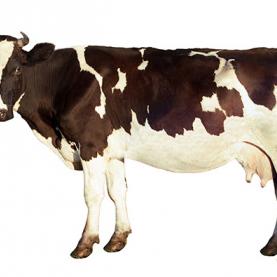The history of pasture farming
Livestock was first farmed when Neolithic hunter-gatherers settled and domesticated animals. Livestock farming provided meat and milk, as well as horn, leather and manure, and a workforce in the fields. It gave rise to new, more performant breeds. With industrialisation, more efficient tools, such as milking and slaughtering machines, were developed to meet the demand of a growing population.
From symbiosis to artificial selection
On the scale of human evolution, the domestication of animals is a recent phenomenon. Dating back just 10 000 years or so, it is thought to predate plant cultivation. Global warming at the end of the glacial era enabled human settlement and the beginnings of agriculture. Livestock farming is the result of a symbiosis between human beings and animals, with each one recognising the advantages of coexistence. Sheep are thought to be the first animals domesticated for food production, and sheep farming has prospered since Antiquity. However, in Central Europe, between the 1st and 5th centuries CE, sheep farming was relegated to third place behind pig farming. Cattle were in first place and accounted for over 50% of the farm animal population (Hartung, 2013).
Technical discoveries have marked the history of livestock farming over the centuries, improving feed and housing, as well as breeding and the safety of animals. Sources from Antiquity show that, during winter, livestock was kept in stables equipped with a system for evacuating their droppings (Hartung, 2013, Benecke, 1994). For the rest of the year, the animals were left outside in the open air.
During the European Middle Ages, the feudal system was conducive to the development of agricultural areas, and livestock farming helped optimise crops. Stable manure became increasingly available and, in Northern Europe, crop rotation (winter crops, spring crops, a year in which the land was left fallow for grazing) replaced biennial crop rotation (spring crops and fallow). A form of polyculture integrating livestock farming and crop production was introduced. The consumption of meat became more popular, especially of pork, which accounted for almost 50% of farm animals bred during the High Middle Ages (11th-13th centuries). There was no shortage of meat. Without efficient means of transport and preservation, the narrow market created a status quo in production.
Change came in the 17th and 18th centuries. Fallowing was gradually abandoned in favour of crop rotation. During the Enlightenment, in response to the needs of the growing population, scientists worked to improve and increase both crop and livestock production. Their research already demonstrated the harmful nature of the gases emitted by ruminants and served to improve the animals’ living conditions. Stables were built with higher roofs, aeration systems were added, and manure was harvested and stored while waiting to be used as fertiliser. In Great Britain, livestock farming systems and their usefulness were questioned. Thanks to research by Robert Bakewell (1725-1795), the British agricultural revolution in the 18th century led to the systematisation of artificial selection of species to increase production and profitability.
Urban markets profited from the boom in cattle farming in the 18th century. Cattle provided traction power and a food source (meat and dairy products), and were also used in industry (tallow, leather and hides). The rural landscape was transformed and segmented. Some regions, such as Lower Normandy and Limousin in France, specialised in livestock farming and converted arable areas into fattening meadows. The epizootic of rinderpest (a disease finally eradicated in 2010) ravaged Europe, giving rise to the development of veterinary science. Then, exponential industrialisation in the 19th century paved the way for intensification. Feedlots (intensive fattening units) emerged in the United States in the 1920s. Although the number of farms in Europe decreased, overall production increased to 11.8 billion ruminants and 1.5 billion pigs in 2010 (Hartung, 2013). From the latter half of the 20th century, livestock farming conditions (task automation, the large number of animals in a restricted space and the advanced specialisation of breeds chosen according to the final product) prompted public debate about animal welfare, the traceability of food products, and environmental pollution.
Benecke, N. 1994. Der Mensch und seine Haustiere. Stuttgart : Konrad Theiss Verlag GmbH und Co., 1994.
Hartung, Jörg. 2013. A Short History of Livestock Production. [book auth.] A. Aland and T. Banhazi. Livestock Housing: Modern Management to Ensure Optimal Health and Welfare of Farm Animals. s.l. : Wageningen Academic Publishers, 2013.
Jean, Guillaume. 2013. Ils ont domestiqué plantes et animaux: prélude à la civilisation. s.l. : Éditions Quae, 2013.
Jussiau, Roland, Montméas, Louis and Parot, Jean-Claude. 1999. L'élevage en France: 10 000 ans d'histoire. s.l. : Educagri Éditions, 1999.
Leturcq, Samuel. 2004. La vie rurale en France au Moyen Âge. Paris : Éditions Colin, 2004.
Moriceau, Jean-Marc. 2010. Chroniques paysannes: du Moyen Âge au 20e siècle. s.l. : France Agricole Éditions, 2010.
Paillat, Monique (dir.). 1997. Le mangeur et l'animal. Mutations de l'élevage et de la consommation. Paris : Éditions Autrement, 1997.






